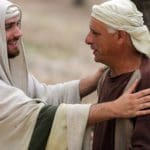In October 1838, Governor Lilburn W. Boggs of Missouri issued one of the most infamous orders in American history. Known as the “Extermination Order,” it commanded that the Latter-day Saints be treated as enemies and “exterminated or driven from the state.” With a single decree, the state turned its full power against a religious community whose only aim was to worship God in peace.
The consequences devastated the Saints. Families fled their homes. Mobs killed men. Women and children ran for their lives in the cold of winter with little more than the clothes they wore. Yet in this crucible of suffering, the Saints chose faith. They learned discipleship’s cost, practiced forgiveness’s courage, and demonstrated the unshakable power of covenant loyalty.
The Context of Fear and Suspicion
Missouri in the 1830s simmered with political volatility and social division. When thousands of Latter-day Saints moved in, their new neighbors bristled. The Saints voted as a bloc, bought land in large numbers, and openly proclaimed their mission to build Zion. Old settlers viewed them as a threat to their way of life.
Misinformation, prejudice, and fear stirred mobs to violence. Armed groups clashed. When reports—many exaggerated—reached Governor Boggs, he chose eradication over reconciliation. With Executive Order 44, he declared open season on the Saints.
The Consequences of Violence
The order unleashed unspeakable suffering. At Haun’s Mill, a mob massacred men and boys. Raiders looted homes and torched farms. Mothers carried infants into the freezing woods. Thousands abandoned homes, fields, and livelihoods. They carried only their faith.
The Extermination Order remained on the books until 1976, when Missouri Governor Christopher Bond rescinded it, calling it a “blot” on the state’s history. For nearly 140 years, the order reminded the nation how easily society can trample religious liberty.
The Enduring Power of Forgiveness
The Saints refused to let this decree define their future. They carried scars, but they also carried faith. They rebuilt lives in Nauvoo, then pressed on to the Rocky Mountains, where they raised a global church. They remembered the injustice, yet they chose to forgive.
Their example speaks to us today. Each of us faces betrayal, prejudice, or persecution—if not from mobs, then from relationships, workplaces, or communities. We may not control how others treat us, but we can control how we respond. The Saints in Missouri teach us that faith under fire refines discipleship, and forgiveness unlocks God’s healing power.
Lessons for Our Day
- Defend religious liberty.
It remains fragile, and we must protect it for ourselves and for all people. - Let faith flourish in exile.
The Saints lost land and safety, but they never lost their covenant identity. - Choose forgiveness over revenge.
Forgiveness does not excuse injustice, but it frees us from bitterness. - Consecrate suffering into strength.
Missouri’s ashes led to Nauvoo’s beauty and Salt Lake’s strength. Persecution produced perseverance. Tragedy yielded testimony.


















